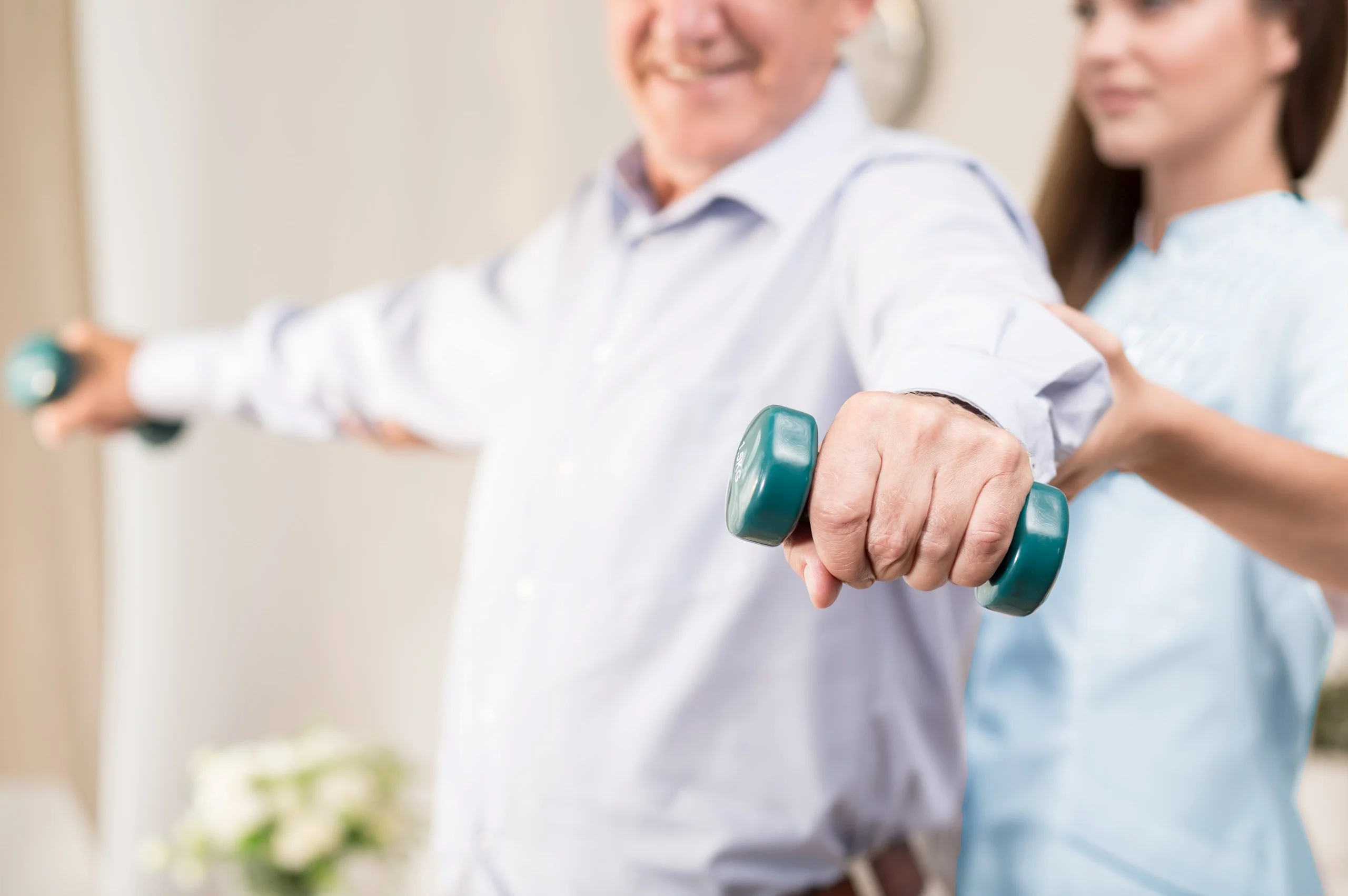Strength in Motion: Empowering Parkinson’s Care Through Exercise
Exercise is important for everyone, but for individuals living with Parkinson’s disease, it’s far more than a healthy habit—it’s a critical part of maintaining independence, mobility, and quality of life. At All Heart Home Care, we believe in empowering families and clients with the tools and knowledge to thrive. Ongoing research continues to show that consistent movement not only helps improve balance, strength, and flexibility but also offers relief from non-motor symptoms like depression, constipation, and fatigue.
A major study, the Parkinson’s Outcomes Project, found that individuals who began regular exercise early in their diagnosis—at least 2.5 hours per week—saw a slower decline in quality of life than those who started later. The takeaway? Establishing a movement routine early on is a powerful tool for long-term care.
What Kind of Exercise Works Best for Parkinson’s?
There’s no one-size-fits-all prescription, but exercise plans for Parkinson’s should include these four key elements:
- Aerobic training (walking, biking, dancing)
- Strength building (resistance bands, light weights)
- Balance and agility practice (Tai Chi, multitasking drills)
- Flexibility and stretching (yoga, guided stretching routines)
Many routines combine multiple elements at once. Whether it’s boxing, Pilates, swimming, or even modified home workouts, the most effective exercise is the one your loved one enjoys and can stick with consistently.
Types of Parkinson’s-Friendly Programs
Parkinson’s-focused classes and home-based routines are more available than ever. Examples include:
- Non-contact boxing classes
- Resistance and treadmill training
- Aerobic activities tailored to physical needs
- Gentle yoga or stretching routines
- Home-based workouts via YouTube or virtual fitness sessions
Not everyone starts out active—and that’s okay. Begin with something manageable, like a short daily walk. Progress can be gradual and based on comfort and ability.
Getting Started Safely
Before starting any exercise routine, it’s essential to talk with a physical therapist who specializes in Parkinson’s care. They can evaluate current function and guide you through safe exercises tailored to your loved one’s stage of the disease.
Track daily steps with a pedometer or smart device to stay motivated. Alternate indoor and outdoor activity to keep it interesting, and most importantly, find something they enjoy doing.
Exercising Together
Having a workout partner or caregiver join in can help with motivation and safety. For some, group sessions offer the added benefit of social connection. Others may do best with one-on-one coaching. Either way, building a consistent routine, even a light one, creates long-term benefits.
Tips for Successful Parkinson’s Exercise
- Consistency matters more than intensity.
- Longer programs (6+ months) show better results than short-term efforts.
- More intense movement (fast cycling, cardio boxing, swimming) may provide extra benefits for those able to participate.
- Always include warm-ups, cool-downs, and stretching.
- Know your loved one’s limits and adjust routines as needed.
Common Challenges and What to Watch For
As Parkinson’s progresses, challenges like reduced flexibility, muscle strength, and endurance may arise. These can affect balance, walking, and posture. But staying active—even in small ways—helps slow these changes.
Working with a trained in-home caregiver can provide essential support during exercise, especially if your loved one is at risk of falling or fatigue.
The Brain-Boosting Benefits of Movement
Exercise doesn’t just improve physical strength. It can support brain function, protect neurons, and increase dopamine efficiency. Long-term movement helps the brain compensate for the changes caused by Parkinson’s through a process called neuroplasticity—essentially, the brain forming new connections and pathways.
Clinical studies have shown that exercise can:
- Improve walking speed, balance, and posture
- Support hand coordination and motor skills
- Increase dopamine usage in the brain
- Reduce tremors and stiffness
- Elevate mood and reduce fatigue
Neuroprotection and Long-Term Hope
Some research suggests that consistent exercise may protect the brain’s neurons from further degeneration. While not a cure, physical activity may help preserve function and even slow the progression of symptoms.
Research from institutions like Rhodes University and the Cleveland Clinic has shown remarkable results—from improved gait after treadmill use to neurochemical changes in the brain following high-speed cycling. Movement, it seems, is not only medicine but potentially protective as well.
How All Heart Home Care Can Help
Our San Diego-based caregivers are trained to assist clients with Parkinson’s in building and maintaining safe, effective exercise routines right from the comfort of home. Whether it’s daily walks, balance practice, stretching, or simply keeping your loved one encouraged and engaged, we’re here to help them stay active—and connected—every step of the way.
If your family is exploring Parkinson’s care at home, we’d be honored to support you. Let’s create a personalized care plan that supports strength, safety, and peace of mind.







